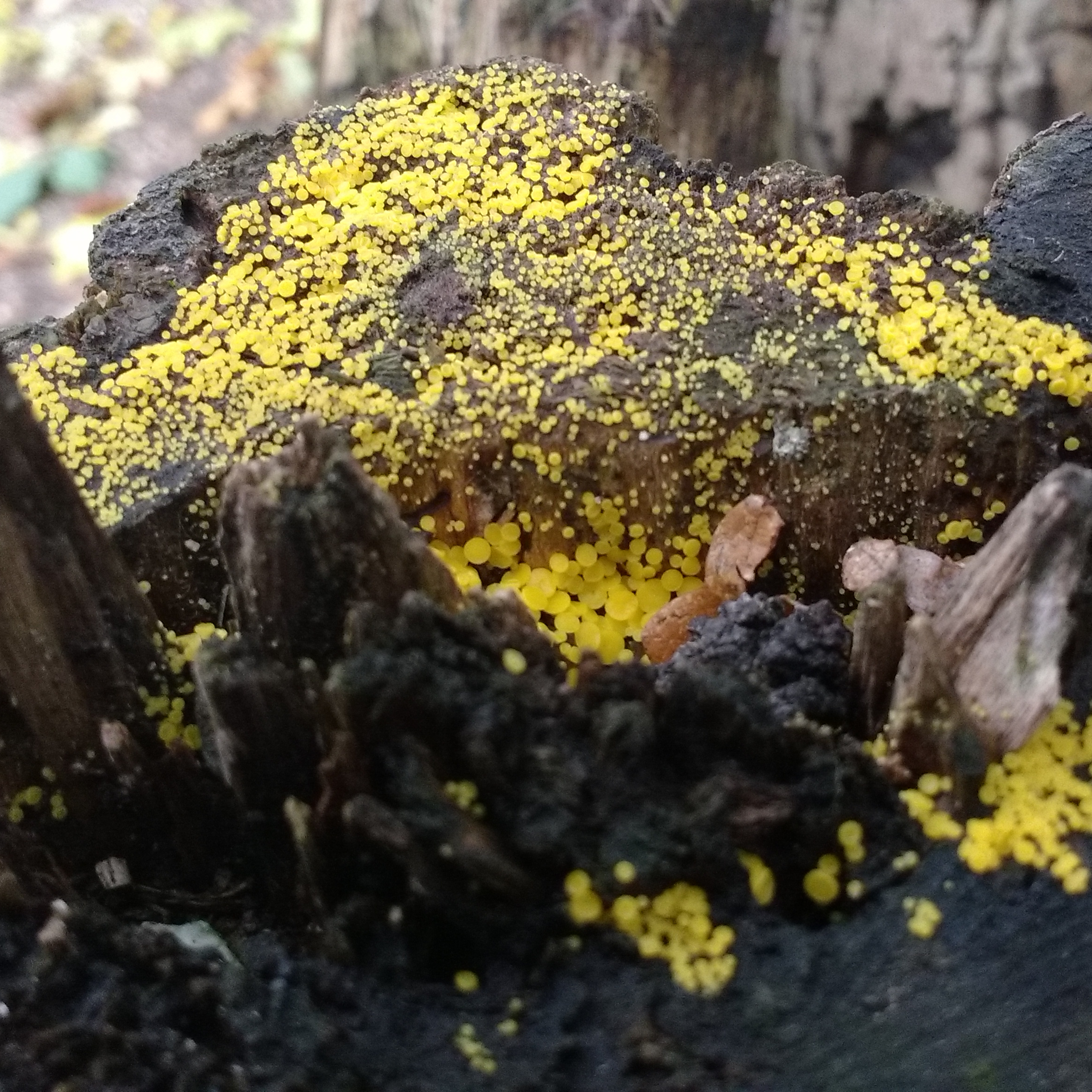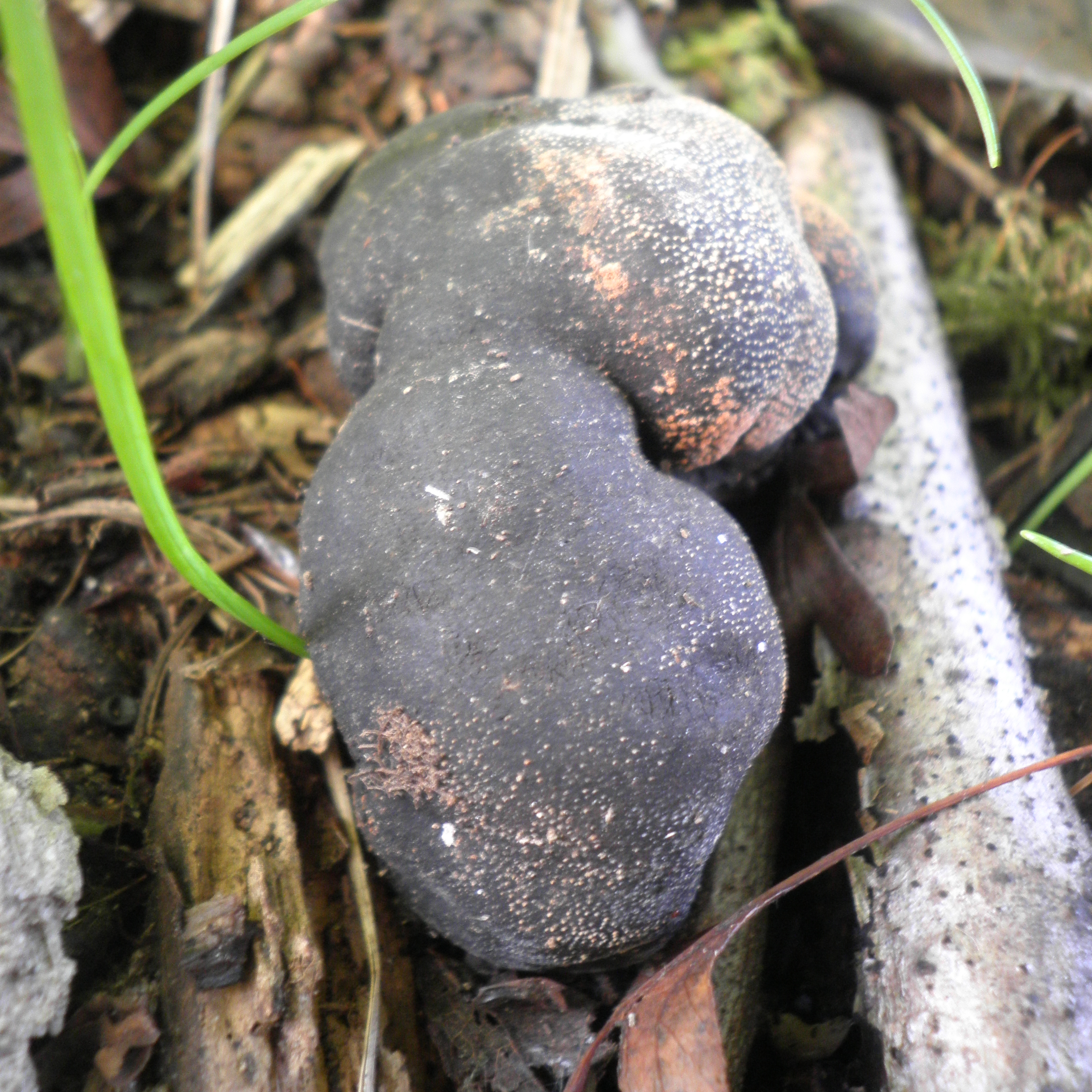Autumn is a good time to find fungi, which often produce their fruiting bodies (mushrooms or molds) after rain. The fungi form a separate kingdom distinct from both animals and plants. Around 100,000 species have been classified. It is estimated that between 1.5 and 5 million species exist on earth.
Along the Straight Path you can find striking examples of woodland fungi, including:
 Lemon discos Bisporella citrina - very small bright yellow cups on decaying wood
Lemon discos Bisporella citrina - very small bright yellow cups on decaying wood
.JPG) Glistening Inkcap Coprinus micaceus - Cap 2-4cm, bell-shaped, covered with glistening powder, on dead and buried wood
Glistening Inkcap Coprinus micaceus - Cap 2-4cm, bell-shaped, covered with glistening powder, on dead and buried wood
 1.JPG) Candlesnuff fungus Xylaria hypoxylon - cylindrical or flattened fruit bodies 3-8 cm, twisted or bent, like antlers, black with white tips on decaying hardwood
Candlesnuff fungus Xylaria hypoxylon - cylindrical or flattened fruit bodies 3-8 cm, twisted or bent, like antlers, black with white tips on decaying hardwood
 King Alfred's Cakes Daldinia concentrica - hard, black, rounded, as if blackened, showing concentric lines when cut
King Alfred's Cakes Daldinia concentrica - hard, black, rounded, as if blackened, showing concentric lines when cut
The cover shows Turkeytail Trametes versicolor, Stave Hill Ecological Park, 2016.
Photograph: Clare Street
Fungi, Stave Hill Ecological Park, 2016.
Photographs: Clare Street
 Lemon discos Bisporella citrina - very small bright yellow cups on decaying wood
Lemon discos Bisporella citrina - very small bright yellow cups on decaying wood